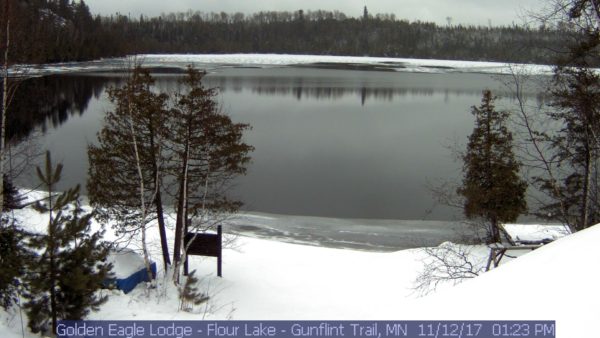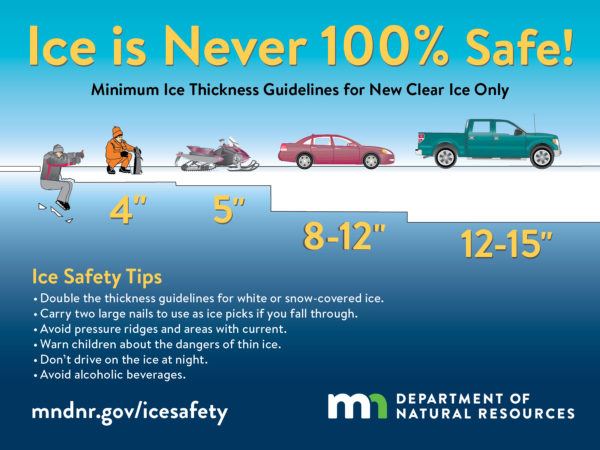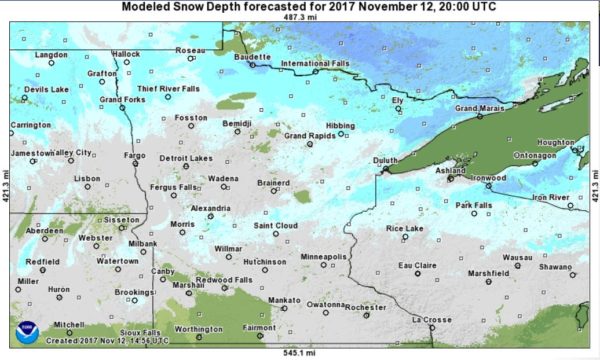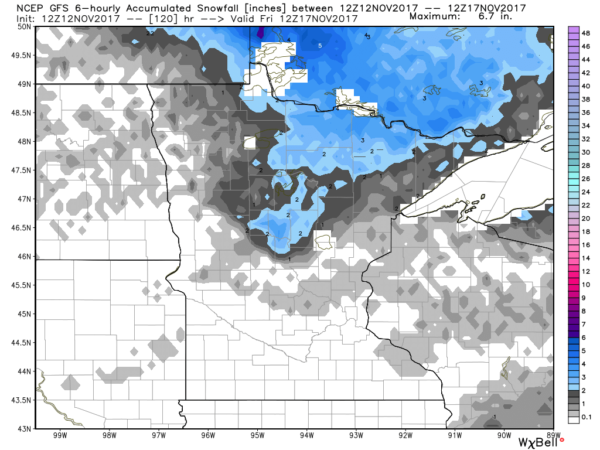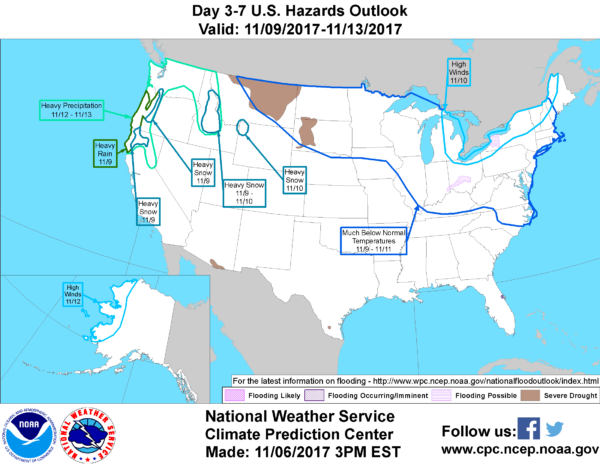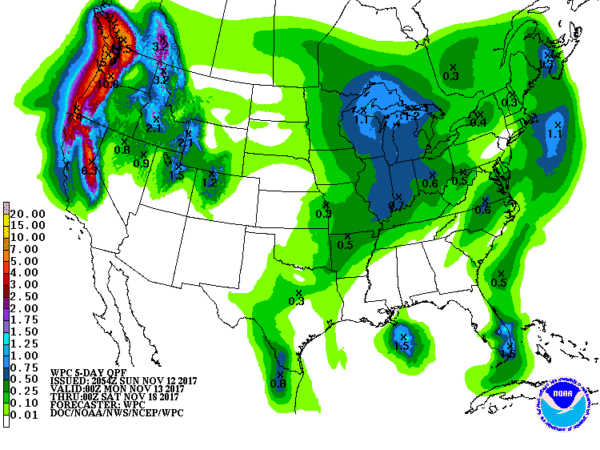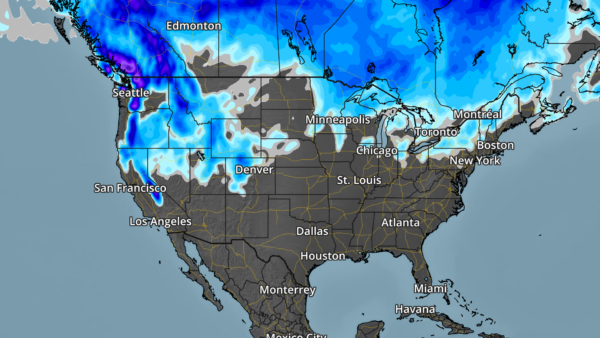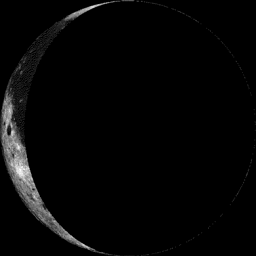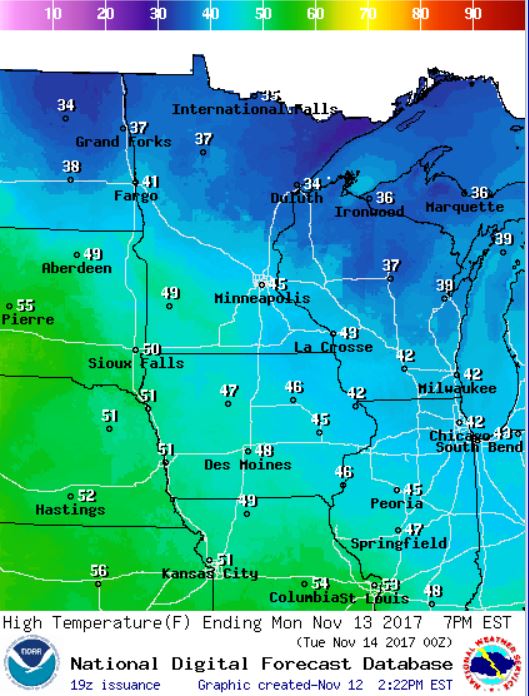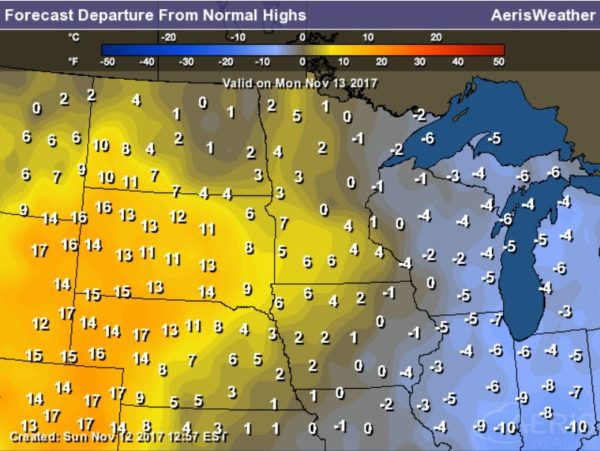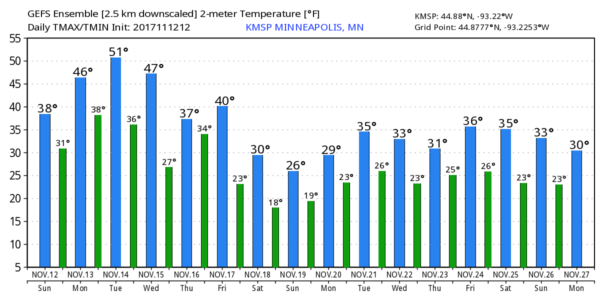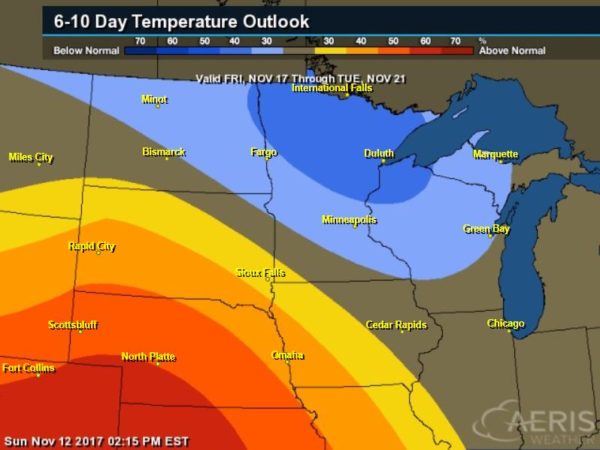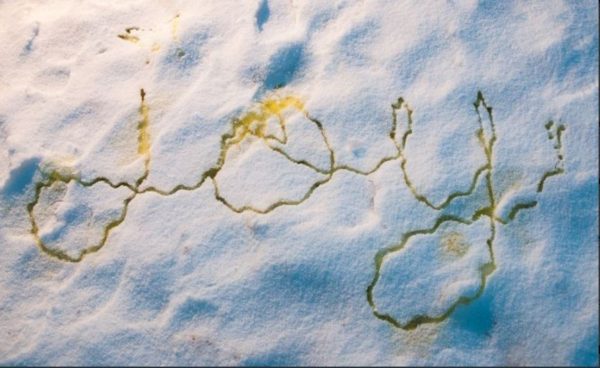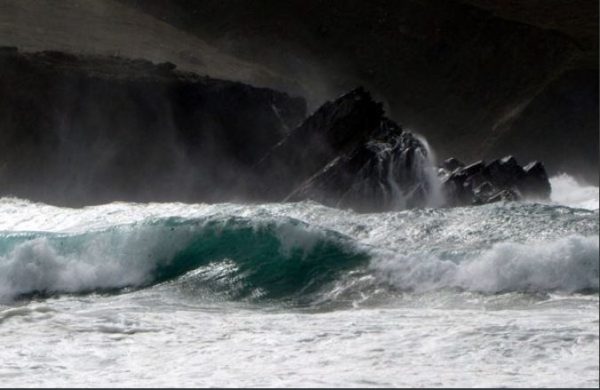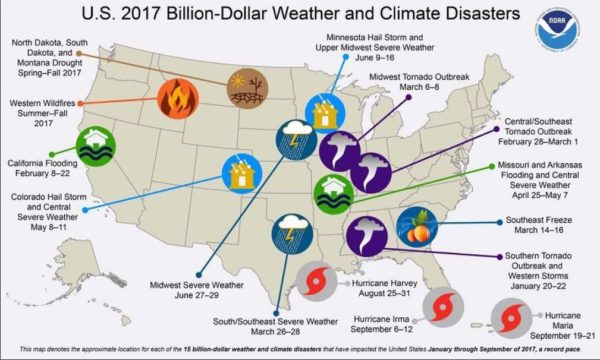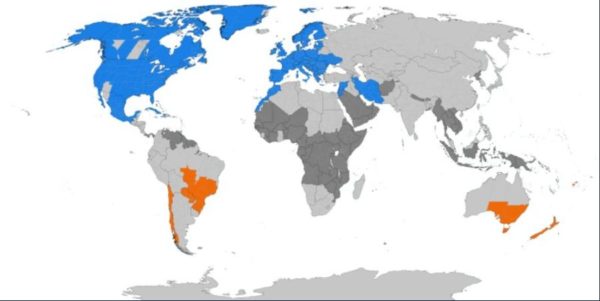.gif)
Snowfall Potential Through the Week
Here’s the snowfall potential through Friday morning, which suggests minimal snowfall potential through the second full week of November. The best potential of any accumulation looks to be in far northern MN, where 2″ or 3″ maybe possible.
We are a little more than 2 weeks from the official close of the Atlantic Hurricane Season (November 30th). Note that peak activity generally occurs on September 10th and stays somewhat active through the month of October, but really diminishes through the month of November. With that said, there have been years where tropical activity continues through the end of the year and even into the follow calendar year! 2005 was one of those years as Tropical Storm Zeta developed December 30th and continued through January 6th, 2006.
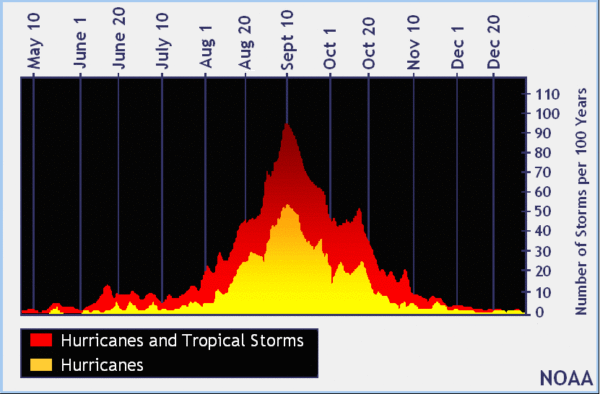
___________________________________________________________
Ongoing Large Wildfires
Here’s a look at the current wildfire map across the country. Note that wildfire activity as REALLY slowed down with only a few major wildfires still burning across parts of Washington, Texas and New Mexico.f
It certainly has been a fairly active first half of 2017 with 1,471 preliminary tornado reports through October 31st. Note that this is the most tornadoes through that date since 2011, when there were 1,820 reports. The map below shows the distribution of the tornadoes so far this year.
PRELIMINARY 2017 Tornado Count
According to NOAA’s SPC, the PRELIMINARY 2017 tornado count is 1,490 (through November 11th). Note that is the most active year for tornadoes since 2011, when there were 1,845 tornadoes. Keep in mind there was a major tornado outbreak in the Gulf Coast region from April 25-28, 2011 that spawned nearly 500 tornadoes, some of which were deadly. That outbreak is known as the Super Outbreak of 2011 and has gone down in history as one of the biggest, costliest and one of the deadliest tornado outbreaks in history.
National Weather Hazards Ahead…
1.) Heavy precipitation across portions of California, Oregon, Washington, and northern Idaho, Mon-Fri, Nov 13-17.
2.) High winds across coastal portions of California and the Pacific Northwest, Mon-Tue, Nov 13-14.
3.) High winds across portions of the Great Basin, Mon, Nov 13.
4.) Heavy snow across portions of the Bitterroots, Wed-Fri, Nov 15-17.
4.) Heavy snow across portions of the Tetons, Wed, Nov 15.
5.) Heavy snow across portions of the western Great Lakes and the Upper Mississippi Valley, Thu-Fri, Nov 16-17.
6.) High winds across much of the Rockies, Great Plains, Upper and Middle Mississippi Valley, and Great Lakes, Thu-Fri, Nov 16-17.
7.) Much below normal temperatures across portions of the Alaska Panhandle and southeastern Alaska, Wed-Fri, Nov 15-17.
8.) High winds across downslope areas of the Alaska Panhandle and southeastern Alaska, Wed-Fri, Nov 15-17.
9.) Heavy precipitation across portions of California, Oregon, and Washington, Sat-Sun, Nov 18-19.
10.) Heavy snow across portions of the Bitterroots, Sat-Sun, Nov 18-19.
11.) Slight risk of much below-normal temperatures for portions of the Great Lakes, Northeast, the Appalachians, the Tennessee and Ohio Valley, the Mid-Atlantic, the Southeast, and the Great Lakes, Wed-Fri, Nov 22-24.
12.) Moderate risk of much below-normal temperatures for portions of the Alaska Panhandle, Sat, Nov 18.
13.) Slight risk of much below-normal temperatures for portions of the Alaska Panhandle and mainland Alaska, Sat-Wed, Nov 18-22.
14.) Severe Drought across parts of the the Lower and Middle Mississippi Valley, the Northern and Southern Plains, the Northern Rockies, Arizona, and Hawaii.
_____________________________________________________________________
Here’s a look at high temperatures across the nation on Monday, which suggests that temperatures across the eastern part of the nation will still be running below average. However, folks in the Four-Corners Region to the Plains will be nearly 10F to 15F above average.
National Weather Outlook
Here’s the weather outlook through Tuesday, which shows active weather continuing across parts of the Eastern US and the Pacific Northwest. Part of that system will turn into a developing storm a in the middle part of the country.
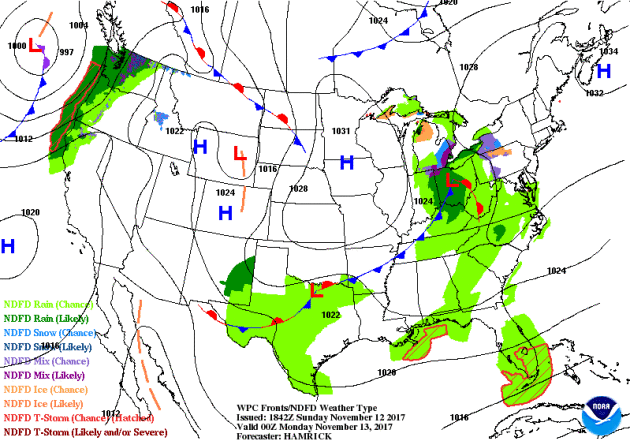
According to NOAA’s WPC, areas of heaviest precipitation will be found across the Western US with double digit liquid tallies possible across the high elevations in the Cascades and the Olympic Mountains. There will also be some 1″ to 3″ liquid tallies across the Central and Northern Rockies.
By Paul Douglas
This Day in Weather History
November 13th
1986: Lakes are frozen over throughout much of the state, reaching as far south as Winona.
1938: A snowstorm develops across northern Minnesota. The barometer falls to 29.31 inches in Duluth.
1933: The first Great Dust Bowl Storm occurs. The sky darkened from Minnesota and Wisconsin to New York State.
________________________________________________________
Average High/Low for Minneapolis
November 13th
Average High: 43F (Record: 71F set in 1999)
Average Low: 28F (Record: 0F set in 1986)
Record Rainfall: 1.04″ set in 1951
Record Snowfall: 7.7″ set in 2010
_________________________________________________________
Sunrise/Sunset Times for Minneapolis
November 13th
Sunrise: 7:08am
Sunset: 4:46pm
Hours of Daylight: ~9 hours 38 mins
Daylight LOST since yesterday: ~2 minutes and 25 seconds
Daylight LOST since summer solstice (June 20th): 5 hours & 59 minutes
__________________________________________________________
Moon Phase for November 7th at Midnight
3.4 Days After Last Quarter
Tuesday will be another chilly day across the region with temps running nearly 10F to 15F below average. Much of the state will only see highs in the 20s and 30s across Minnesota and the northern half of Wisconsin.
Here’s the temperature outlook through November 27th, which shows a very mild week ahead with temps approaching 50F or better a few times through Wednesday. Considering how chilly it’s been as of late, this will feel like a November heatwave! Note that temps take a dip later this week and weekend ahead with 30s likely into the 2nd half of the month.
6 to 10 Day Temperature Outlook
Temps may warm up a bit as we head through the 2nd full week of November, but the extended outlook suggests that cooler than average temperatures will return from November 17th to the 21st.
6 to 10 Day Temperature Outlook
According to NOAA’s CPC – much of the southwestern part of the nation will remain much above average, but areas from the Midwest and into the Mid-Atlantic will be cooler than average as we head into the 2nd half of the month.

_____________________________________________________________________


